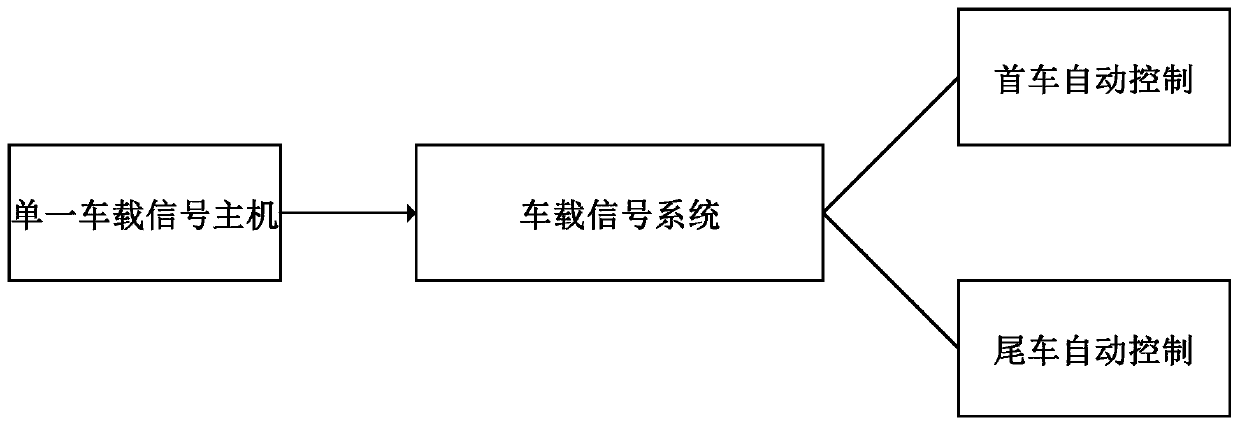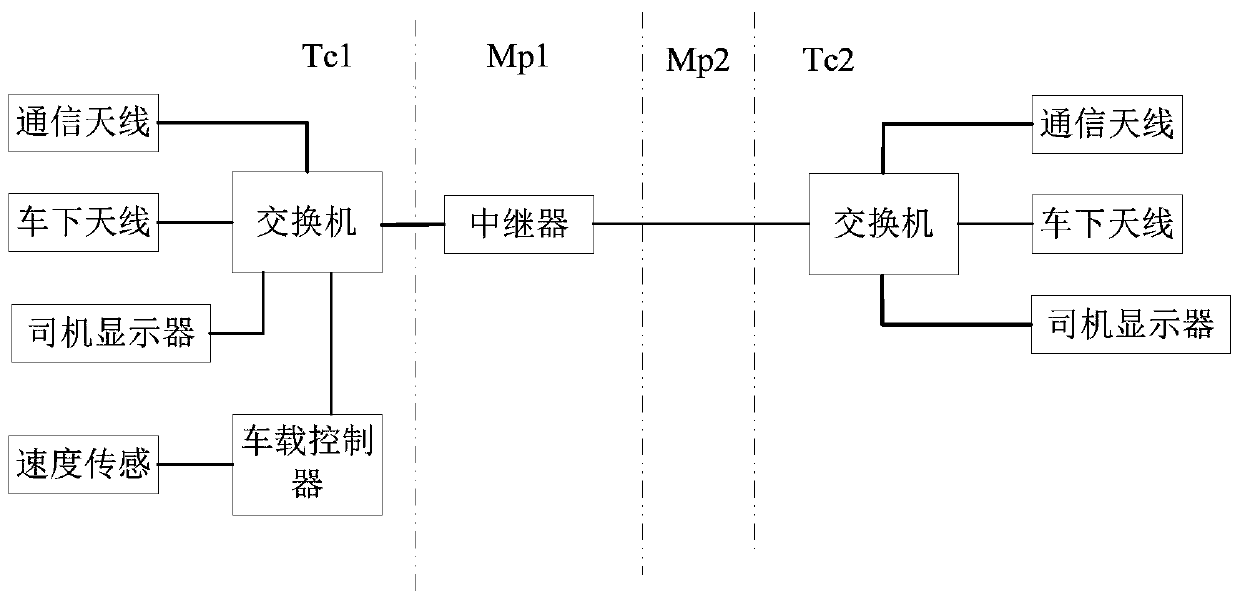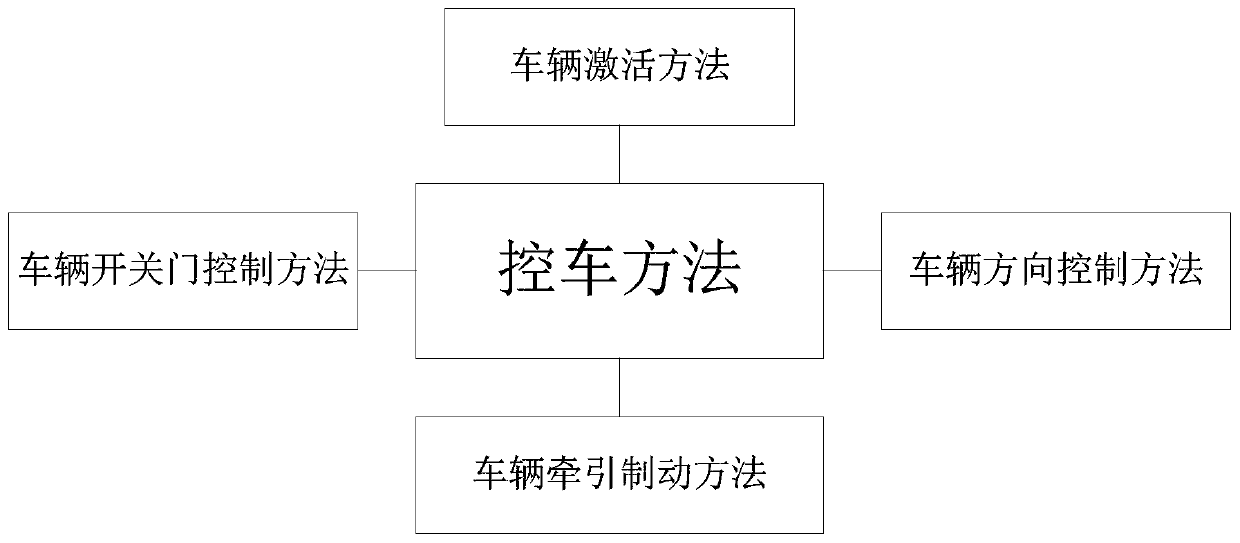A method and system for controlling a vehicle with a single vehicle-mounted signal host
A technology of a signal system and control method, applied in the directions of signal indicators, railway signals, railway signals and safety on vehicles, can solve the problems of low vehicle control efficiency, cumbersome and repetitive vehicle control steps, etc., and improve vehicle control efficiency. , Simplify control methods and steps, improve the effect of existing lines
- Summary
- Abstract
- Description
- Claims
- Application Information
AI Technical Summary
Problems solved by technology
Method used
Image
Examples
Embodiment 1
[0034] Such as figure 1 As shown, a schematic diagram of the concept of a single vehicle-mounted signal host controlling a vehicle described in this embodiment, the system includes a single vehicle-mounted signal host, a vehicle-mounted signal system, and the first and last vehicles. The first and last vehicles are mainly the first vehicle and the rear vehicle. Either end of the first car or the last car, preferably, the single vehicle signal host is installed at the first car end. In the automatic control mode, the vehicle control system only uses a single vehicle signal host to realize the control of the first vehicle and the rear vehicle through the vehicle signal system. Further, this embodiment is not limited to only including the first vehicle and the last vehicle, and the vehicle control system described in this embodiment can control two or more vehicles. The advantage of using only a single on-board signal host to realize train control is that it makes the network de...
Embodiment 2
[0039] Such as image 3As shown, the schematic diagram of the method for controlling the vehicle with a single vehicle-mounted signal master described in this embodiment includes a vehicle activation method, a vehicle direction control method, a vehicle traction braking method, and a vehicle door opening and closing control method. The operating status of the vehicle includes automatic control status and non-automatic control state. In the state of automatic vehicle control, the vehicle control method realizes the control of the first vehicle and the rear vehicle through a single vehicle-mounted signal host, and the single vehicle-mounted signal host sends out control commands, which are output to the first vehicle through different control channels in the vehicle-mounted signal system. The terminal control module of the car or the tail car, the terminal control module executes the control command to realize the control of the first car or the tail car.
[0040] In the non-au...
Embodiment 3
[0042] Such as Figure 4 As shown in FIG. 1 , it is a schematic diagram of the vehicle activation method in the method for controlling the vehicle by the single vehicle signal host described in this embodiment. Vehicle activation methods include mechanical key activation and signal activation, wherein signal activation is applicable to the automatic control state of the vehicle. When signal activation is used under automatic control, a single vehicle-mounted signal host sends an activation command signal, and the activation command outputs the activation status of the first vehicle and the last vehicle through the unused port of the single vehicle-mounted signal host, so as to realize the activation of the first vehicle and the last vehicle .
[0043] Such as Figure 6 As shown, it is specifically the activation interlock circuit diagram in the interlock circuit. This embodiment takes the activation of the interlock circuit as an example to illustrate the principle of the i...
PUM
 Login to View More
Login to View More Abstract
Description
Claims
Application Information
 Login to View More
Login to View More - R&D
- Intellectual Property
- Life Sciences
- Materials
- Tech Scout
- Unparalleled Data Quality
- Higher Quality Content
- 60% Fewer Hallucinations
Browse by: Latest US Patents, China's latest patents, Technical Efficacy Thesaurus, Application Domain, Technology Topic, Popular Technical Reports.
© 2025 PatSnap. All rights reserved.Legal|Privacy policy|Modern Slavery Act Transparency Statement|Sitemap|About US| Contact US: help@patsnap.com



